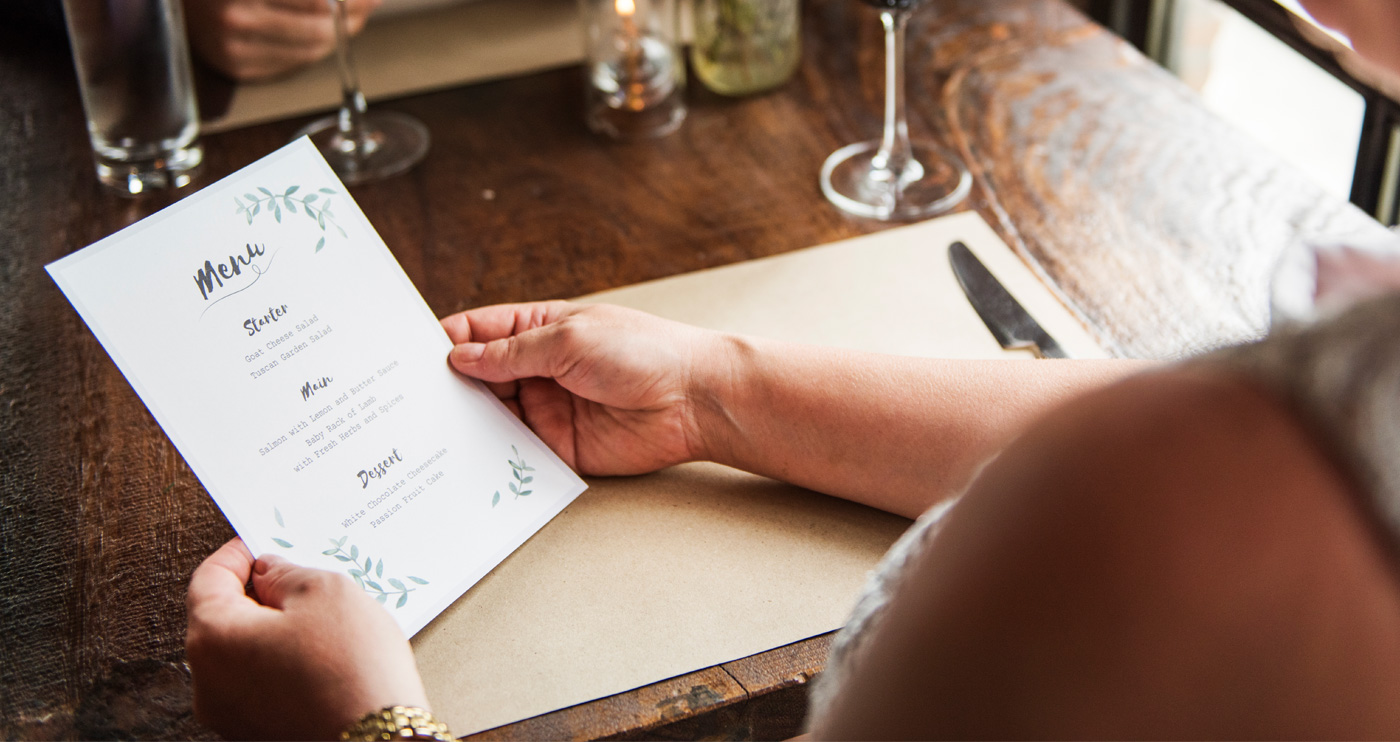
It’s a known fact that restaurants cook for flavor over nutrition. They want to produce food that tastes good and feels satisfying, no matter how much of a sodium or calorie explosion it might be. When you cook for yourself, you get to see and control everything that goes into your food — if a dish looks like it calls for way too much butter or salt, you can scale it back or make all the substitutions you want. That’s why, even if you have otherwise-immaculate dietary habits, it’s so easy for things to start slipping when you have to order takeout.
Fortunately, this doesn’t have to be a foregone conclusion. You can still eat well and mindfully while hitting up your favorite local takeout joint. Here’s how:
1. Skip places that don’t offer nutrition facts.
When in the internet age, a ton of restaurants have seen the value of letting their customers know exactly what they’re eating. From comprehensive ingredient lists to nutrition facts, you can often visit their website, take a peek at their menu, and download a PDF of all of the information you could ever want to know. This is helpful whether you want to limit calories, need a heart-healthy diet, or are trying to limit your consumption of animal products.
This doesn’t mean that you can’t order from small shops that don’t have a big web presence, though — just be sure to overestimate their calorie, fat, and sodium contents, and limit how often you eat there.
2. When you do cook, measure everything.
This might seem like an odd piece of advice in a post about takeout, but hear me out: When you routinely measure your food, you get much better at eyeballing exactly what constitutes a serving size. That means that you’ll be able to look at your favorite Chinese food, for example, and get a pretty good estimate for how many servings of rice, meat, and vegetables it holds. People are notoriously bad at eyeballing serving sizes without a lot of practice — research has found that people with a higher BMI tend to overestimate how big a serving is, while those with a lower one tend to underestimate. Measuring when you cook is the best way to get practice.
3. Then save half for later.
Following the above tip, pack some away as soon as you get it. Restaurants don’t want to serve skimpy portions, they want their customers to be satisfied. That means that one dinner might contain enough food to feed two or three people. That can encourage you to eat more than you need.
A 2012 study found that, when people were given unlimited soup bowls that automatically refilled as they ate, they consumed far more soup. Here’s the really wild part: Despite this, they didn’t believe they’d eaten any more than the other study participants, nor did they feel any fuller. An empty plate serves as a visual cue. Figure out an appropriate serving size, and pack the rest of your food away for leftovers. You’re less likely to eat more than you intend to if you have to get up, refill your plate, and reheat your food first.
4. Don’t rush things.
Takeout is fast and easy, which makes it great for days when you’re too busy to cook. That doesn’t mean you shouldn’t take the time to savor your food and eat mindfully, though. Eat at the table, use dishes and silverware, and eat slowly. Take the time to really enjoy it.
5. Cultivate a roster of create-your-own places.
The best way to maintain some control over what you eat is to customize it. It can be annoying to have to make substitutions to an existing dish (and some restaurants won’t even allow it), but many places have a “create-your-own” section of their menu that let you pick and choose ingredients. This gives you a way to not only eat more healthfully, but to tailor your food exactly to your taste. When you pair that with a list of nutrition facts, you have total control over what you get.
Takeout can be a delicious trap. When we don’t make our own food, we have little control over it — the average person probably wouldn’t grill their “healthy” grilled chicken sandwich and bun in butter, but a lot of burger shops do. With these tips, you can still enjoy your favorite takeout dishes without sacrificing your health.